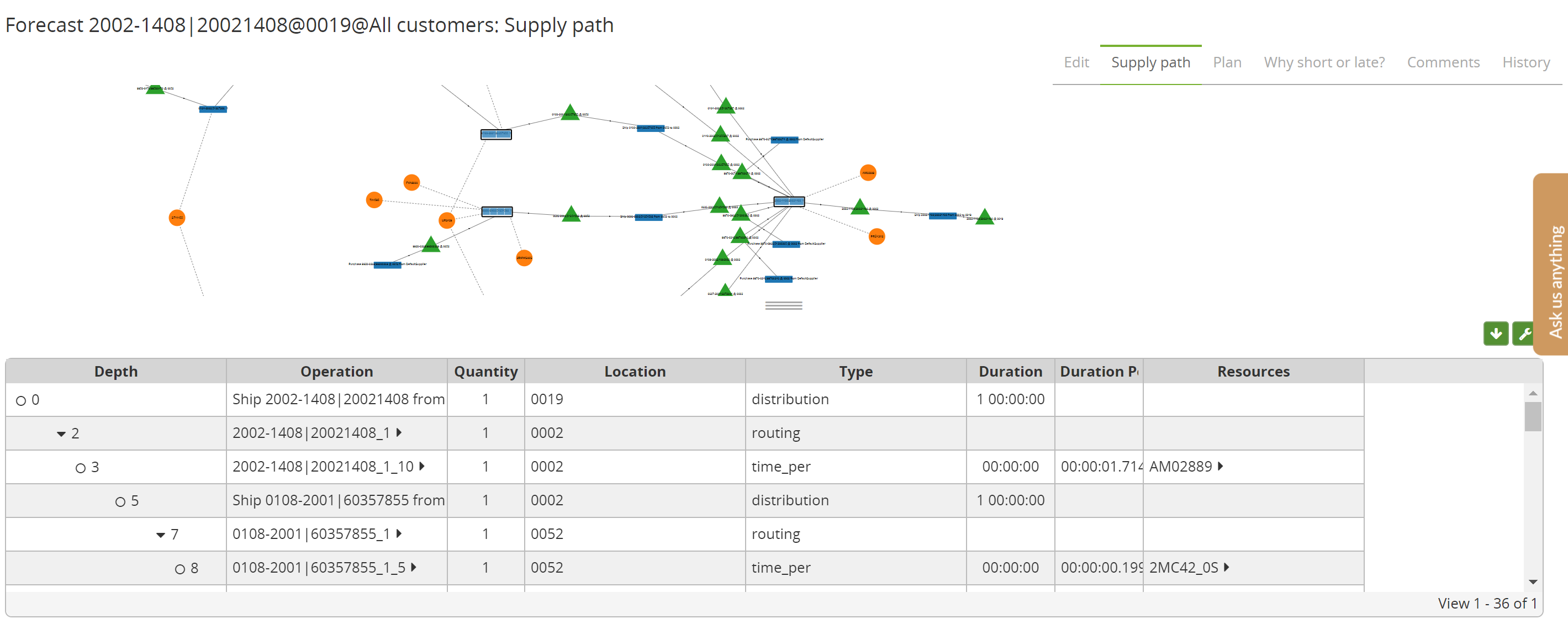New issue
Have a question about this project? Sign up for a free GitHub account to open an issue and contact its maintainers and the community.
By clicking “Sign up for GitHub”, you agree to our terms of service and privacy statement. We’ll occasionally send you account related emails.
Already on GitHub? Sign in to your account
rewrite for supply path logic #162
Comments
|
Time to reprioritize this?
|
|
#1091 also impacts this - suboperations can now also be defined from the operation table itself with a simple "owner" field |
|
@jdetaeye |
|
Can't compare yet - the Wago model has many routings and also some alternates, and the new report doesn't come up correctly yet. To give an idea of depth and size of the supply path: between the "demand X asks" and "demand X gets answer" it is common that there are >1500 lines in the log file. Without the new log file structure I wouldn't have been able to solve the latest issue they found. |
|
Wrote my previous commit without seeing your latest commit... |
|
What is still not implemented is alternate operations (type=alternate), that piece of code is still missing but the logic should be quite close from the routings. |
|
Quick test on Wago dataset https://wago.frepple.com/scenario16/supplypath/forecast/2002-1408%7C20021408_400019_40All%20customers/ New report: |
|
Hmmm... clearly disappointing :-( |
|
I tried few different things for this ticket.
Also, the fact that the producing record became optional in operation material tables adds complexity with plenty of coalesce here and there. I tried to write a query considering above constraints and, even before finishing writing it, it gave poor performance results on wago dataset. bottom line is either
|
|
I would rule out the third option - makes things difficult and unintuitive for newbie modellers. Not worth going that route. Maybe a 4 fourth option: we could have 1 query per buffer, and let the view call&combine these. For 6.0 release, I leave it to you to choose between options 1 or 2, or spend some more time on the 4th option. |
|
Put fix where item supplier location is null |
|
Not perfect but to me no more a showstopper if you want to move new django to cloud-live.
What is left now is to rework the whole thing to have a query per visited buffer (operation?). |
|
Actually, thinking twice about it, the fact that this code only works with new suboperation model makes it a showstopper. It can only move with the 6.0. |
|
Gives an error on wago model on this URL: https://wago.frepple.com/scenario8/supplypath/item/0221-0412%7C2210412/ |
|
just pushed to community and enterprise a first version of the recursive supply path. |
|
I think it deserves testing Hexcel alternates are also supported, world record is this one with 27 alternate suboperations: Had to add a security to stop recursion at some point. Problem rises when you go downstream from a raw material on a wago-like model. You might end up visiting all supply chain. Aligned on html, recursion stops at 400 nodes. |
|
added a fix for incorrect numbering of suboperations |
|
Looks good now. Time is about 7 seconds - better than what we had with the old generation of the report code. |










after all model changes, the code is unnecessarily complex and should be revamped.
Core logic is fine, but the recursion data structure is not the best one any longer...
The text was updated successfully, but these errors were encountered: